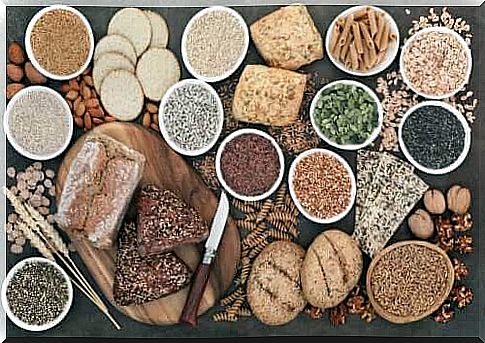Advantages And Disadvantages Of Whole Grains For Kids

According to many nutrition guides, such as the one published by the Spanish Nutrition Foundation, whole grains are essential foods for good nutrition. In the context of infant feeding, the contribution of carbohydrates is essential and cereals can help in this task. Of course, it’s important to always choose whole grain varieties.
We should start by commenting that not all cereals are of the same quality. Carefully observing the label can clear many doubts, because when reading the ingredients, it is possible to detect the presence of added sugars, which should be avoided, as far as possible.
What are whole grains?
The first thing to clarify is the concept of whole grains . With this name, we are referring to a group of foods of plant origin that have undergone a certain industrial processing, but always retaining their peel. Whole grain is used to obtain this product.

In this way, the subsequent absorption of carbohydrates is controlled and an efficient supply of fiber is generated, which can provide several health benefits.
Advantages of Giving Whole Grains to Children
We will comment on the main advantages of the presence of whole grains in infant feeding, as well as the position of science in this regard.
Improve intestinal transit
Whole grains stand out for their fiber content, which has been proven to improve intestinal transit, reducing the risk of constipation. The fiber works by increasing the volume of the fecal cake. Thereafter, the stimulation of mechanical receptors in the digestive tract becomes more intense, as do peristaltic contractions. This is reported by a study published in Alimentary Pharmacology & Therapeutics .
provide energy
It should be noted that whole grains are foods that concentrate large amounts of carbohydrates, which act as an energy substrate for many daily activities. If your intake is not adequate, the child may experience fatigue.
Reduced risk of colon cancer
Although tumor processes are not frequent in children, it is necessary to take into account that during the growth phase, the foundations for future good health are established. In this sense, guaranteeing the intake of whole grains and, therefore, of fiber, generates protection against colon cancer, according to research published in the International Journal of Food Sciences and Nutrition .
Disadvantages of Whole Grains for Children
But not everything that shines is gold. The consumption of whole grains also has some disadvantages.
Cannot be consumed by children under 2 years of age
The child’s digestive system is still developing. As a general rule, it is not recommended that children under 2 years of age consume these foods. In addition to causing suffocation, they are too aggressive for a microbiota still in formation.
Sometimes they make digestion difficult.
Although fiber is associated with good digestive capacity and improved processes, it can sometimes be counterproductive. If for some reason there is a harmful bacterial strain or a condition of dysbiosis in the digestive tract, a high consumption of fiber can cause discomfort. This doesn’t happen in all cases, but the risk is there.

do not always go well
It should also be noted that whole grains can increase gas production in the intestines. In children who often suffer from abdominal pain, its consumption may be discouraged. In such cases, it is better to provide foods that are easily digested and do not produce as much gas.
Why is it necessary to consume them sparingly?
Despite being classified as good for your health, whole grains should be consumed in moderation. They contain carbohydrates, but not the proteins and fats necessary for the child’s proper growth. It is necessary to ensure the presence of foods containing these last two nutrients in the diet.
On the other hand, although fiber is positive in many cases, it should not be abused either. The ideal is to consume it in a fair and adequate amount to maximize its benefits.
Include whole grains in the diet
As you’ve seen, including whole grains in children’s diets is often positive for health. Except in a few specific cases, these foods generate benefits if consumed on a regular basis. However, it is necessary to check the label of the products to make sure they do not contain added sugars.









